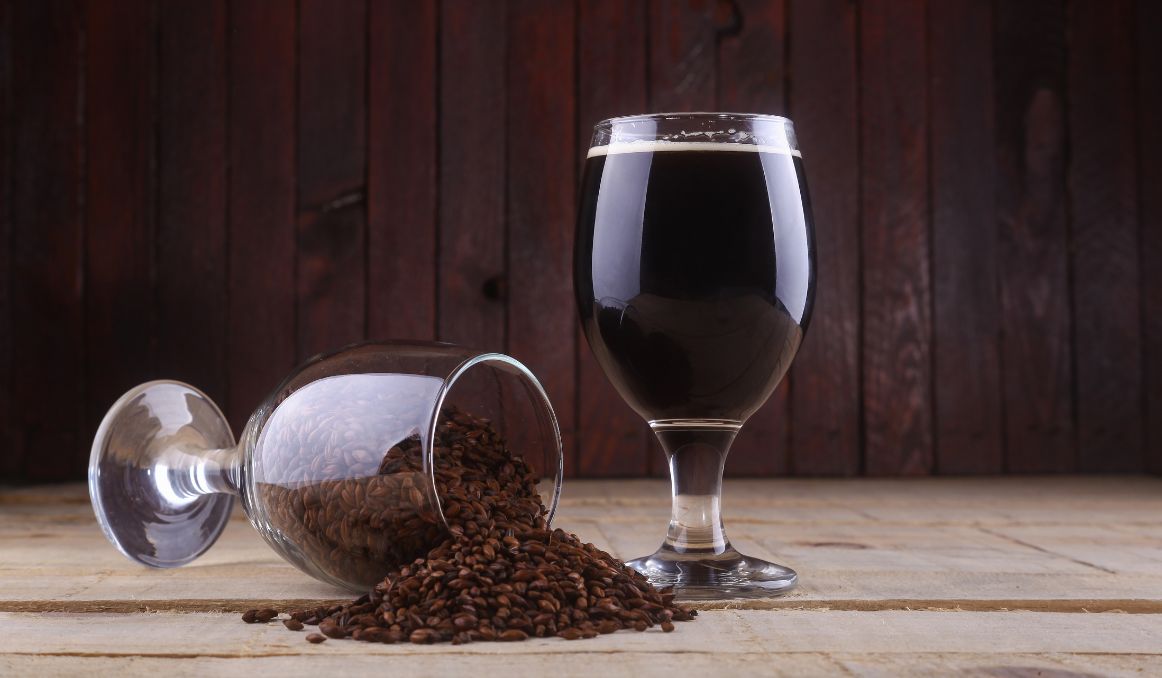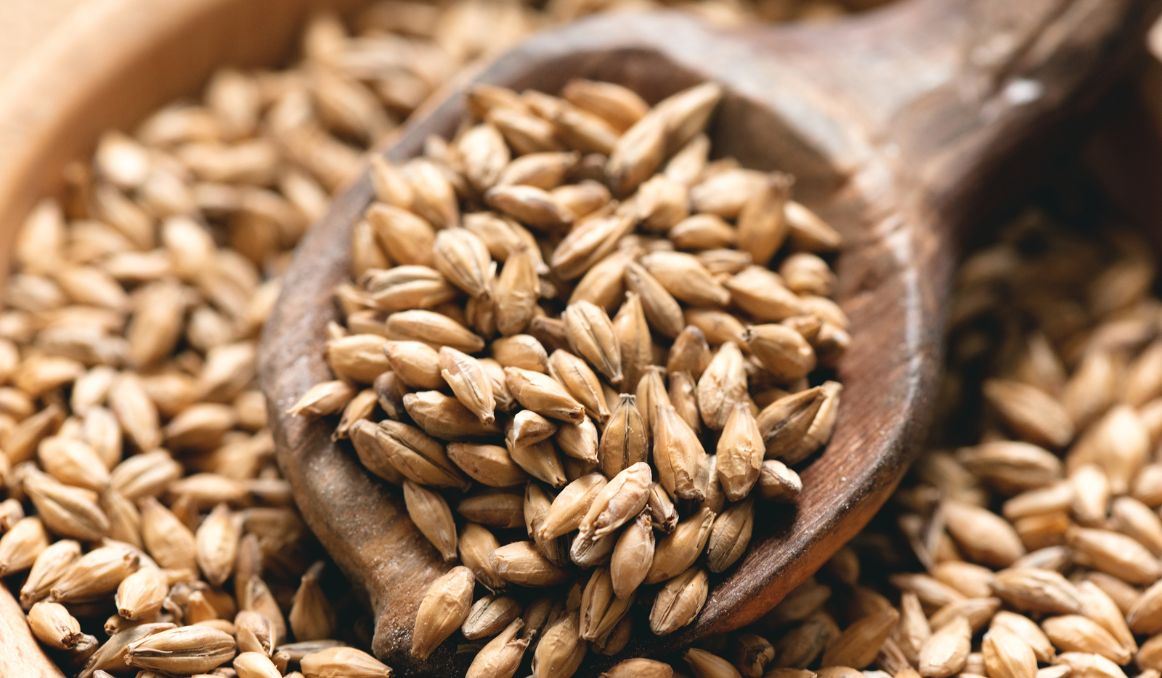How to Use Liquid Malt Extract in Beer Making
It can be used for bottle conditioning, for repitching, for banking, for baking, for candy making, and more. If you’ve been wondering how to use liquid malt extract, you’ve come to the right place.
What Is Liquid Malt Extract?

Liquid malt extract is one of the wonders of progress and industrialization. It makes brewing much easier and less labor intensive on brewers both at home and in larger, commercial breweries.
Liquid malt extract is exactly what it sounds like, the extract of malt in liquid form.
Essentially, it is beer, without the fermentation, so “wort,” concentrated down to a syrup.
To make liquid malt extract, manufacturers will harvest grain, usually barley, also called barley malt or malted barley.
In today’s world, most barley for brewing comes already malted.
Once brewers figured out, thousands of years ago, that beer turned out much better, with a higher alcohol content, once they roasted their grain, malting (another word for roasting, or kilning) became the common practice for brewers.
Today, whether you are working with barley, oats, or wheat, your grain will likely be malted, and often it is simply called malt.
Once they have collected their malted grain, producers will “mash in” the grain, meaning add it to water to bring to a boil.
This process is much like the steeping of tea, wherein you leave the grain in the water first boiling and then steeping long enough to allow all of the rich nutrients to release into the water.
At this point, some manufacturers will add hops as well, cutting down on the sweetness of the wort.
If the purpose of this liquid malt extract is to go specifically to brewers, then hops are usually added.
If the purpose is to go to other food manufacturers, hops may be left out.
Then, the sediment will be filtered out of the wort and the wort will be further boiled down, reduced and concentrated to a syrup.
The end result will be a consistency and color similar to molasses.
Liquid malt extract, or LME, has many uses in food production and is even often used in place of caramel or caramel coloring for foods like candy, cookies, and even soft drinks.
In many cases, the LME is then dehydrated to make dry malt extract, or DME, which then comes in a fine, powdery form.
How to Use Liquid Malt Extract in Beer Making

While it might seem obvious to use LME in confections and baking as the syrup is all natural and nutrient rich, it is a little confounding as to why you would use it in beer making.
Wouldn’t you want to make your own wort?
It’s confusing, right?
You might assume that LME is used in the same way syrups are used for soda, simply add water and yeast and then ferment from there.
In fact, nothing could be further from the truth.
Brewers who use LME still mash in their own malt, add their own hops, and go through the entire brewing process themselves.
Where LME comes in handy is with the use of yeast.
Often, when you go to add yeast to your wort, you may worry that your yeast is not as vital as you hope, that it will start slow, or that it will stagnate altogether.
Having LME on hand can help you ensure your yeast is active and ready to pitch.
Because LME is rich in those fermentable sugars as well as all the other nutrients critical to the production of great beer such as magnesium, niacin, and manganese among others, you will know almost immediately if your yeast is ready to go, and if it isn’t, the LME will get it activated and working well before you need to pitch it.
In concentrated form, LME offers a kind of jump start to your fermentation process, saving you a ton of worry and concern.
You’ll simply add your yeast to the LME one day before you plan to pitch it into your wort and then you can expect fermentation to take off.
Steps for Using LME in Beer
To use LME in your beer, you simply need to follow these steps:
- Bring a pot of water to boil.
- Stir in your LME.
- Boil for 10 minutes.
- Remove your wort from heat and allow to cool fully.
- Transfer your wort to a sanitized flask.
- Shake the container vigorously, allowing all ingredients to fully integrate.
- Pitch your yeast.
- Cover your container loosely with tinfoil or cheesecloth to allow for oxygenation, which keeps your yeast active.
- Allow your starter to sit for at least 12 hours, shaking occasionally during that time.
- Right before pitching, be sure to pour off all of your surface liquid, leaving just the bubbling, frothing yeast ready to pitch.
- Sit back and watch your wort ferment as usual.
Remember to keep in mind during this process that if your yeast does not get to work fermenting within 12 hours, you may have bad ingredients, and you will want to start again with fresh yeast.
It is a good idea to keep the necessary equipment on hand to measure your yeast viability, but also note that some yeast can be fully viable with rates close to 90% and still be slow to start fermenting.
The best equipment will be user friendly and allow you to measure your yeast viability rates before fermentation as well as at each stage throughout, so you can begin to build levels of expectation and “normal” in terms of this particular yeast strain.
Further, you may find that you prefer to work with dried malt extract rather than the liquid as it will last longer on the shelf and may be more user friendly.
The key, always, is to explore and experiment to see what works for you and your brewery.
Cheers!
Are you still pitching fresh yeast every time? By reusing your yeast, you can save up to hundreds of thousands of dollars per year on just yeast alone!
Join the hundreds of brewers from all around the world using the Smartest Automated Yeast Cell Counter! Request a Free Demo Account today and experience firsthand how Oculyze can take your brewery to the next level!
Sources:
Stay on top on important fermentation insights – subscribe to our monthly newsletter and receive a hand-picked selection of our most relevant articles straight to your inbox.
Never miss a beat and get real time updates with a new article each workday by subscribing our social media channels.
Instagram | Facebook | Twitter | YouTube


